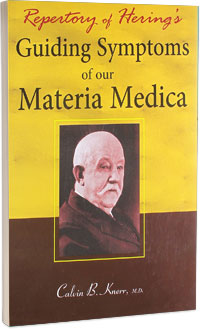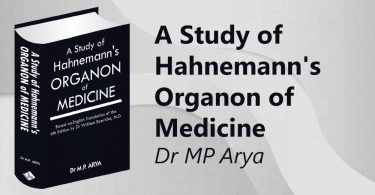by Cb Knerr

- It helps to confirm and reassure our choice of selection of remedy based on totality of symptoms when a peculiar symptom is reported by the patient and both match after reference of this repertory.
About Book:
As in the guiding symptoms, similarly in the repertory, the original readings, the words of the prover and the clinician are kept to the letter, it was judged preferable to retain the most delicate nuances, sometimes even different formulations of the same symptom, by taking scrap in an additional rubric or cross-references, rather than merging into a vague generalization at the sacrifice of individuality ”
Seeing the arrangement of the chapter, section and rubrics one can perceive that Hahnemann schema is followed which is same as that of Hering guiding Symptom of our Materia medica. The repertory is constructed on the basis of general to particular. This repertory is considered to be the most reliable repertory even today with vast information.
Book Highlights:
- 48 chapters including like stages of life and constitution and drug relationship.
- After the Chapter heading, the main rubrics/sub headings of each chapter are given for a thorough understanding about the construction of the repertory
- Each chapter is alphabetically divided into sections and rubrics sufficient to allow full scope for analysis of the matter contained therein
- 26 types of constitution are mentioned like-anemic, asthmatic, carbo-nitrogenoid, gouty etc.
- Under Temperaments, 7 types are given like – bilious, choleric, mild, melancholic, phlegmatic, sanguine.
- Occupational and pathological rubrics are also given
- Contains 408 remedies (in repertory) [Abies nigra to Zizea aurea]
Utility Of Knerr’s Repertory
- This repertory is mostly used for the purpose of reference in clinical practice as it helps to refer to symptoms without much variation in the language of provers.
- It helps to confirm and reassure our choice of selection of remedy based on totality of symptoms when a peculiar symptom is reported by the patient and both match after reference of this repertory.
About Author:
Calvin Brobst Knerr was born on December 27, 1847. His father was a lay homeopath and an uncle who knew Hering at the Allentown Academy. He attended the Allentown College Institute and graduated from Hahnemann Medical College in 1869, then entered the office of Dr. Constantine Hering as his assistant. From 1873-74 Dr. Knerr studied in Berlin, Vienna, and London. Dr. Knerr spent 5 years writing his 2-volume Repertory to the Guiding Symptoms, which was published in 1896.. Knerr compiled this repertory from Hering’s 10 volumes. Knerr used the same structure throughout as found in the Guiding Symptoms, even to including the “relationships” at the end of the book and giving the remedies the four lines of grading.





